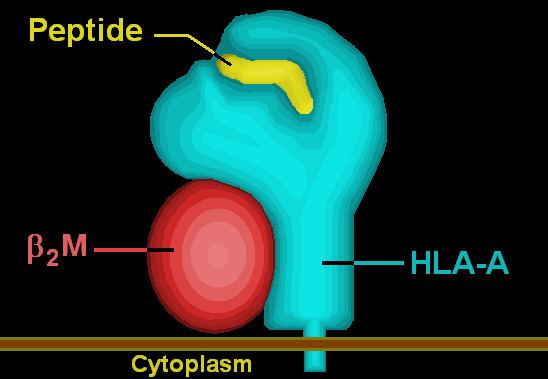Structure αβ heterodimer Subtype allele | allele Available structures | |
 | ||
Subunits HLA-A*69--, β2-microglobulin | ||
HLA-A69 (A69) is a human leukocyte antigen serotype within HLA-A serotype group. The serotype is determined by the antibody recognition of α69 subset of HLA-A α-chains. For A69, the alpha "A" chain are encoded by the HLA-A*69 allele group and the β-chain are encoded by B2M locus. This group currently is dominated by A*6901. A69 and A*69 are almost synonymous in meaning. A69 is a split antigen of the broad antigen serotype A28. A69 is a sister serotype of A68.
Contents
A69 is more common in Levant. A69 (A*6901) is a derivative of the A*6801 allele that has undergone gene conversion with A*02. The recombination took place no more than 330,000 years ago.
Serotype
A69 is poor, with low specific detection, high non-specific identification by A28, and false recognition by A68 and A2.
Distribution
Distribution of A69 places nodal center in the Levant, but high levels in West Africa. The model of human genetic origin places first migrations from Eastern Africa. However, in many east African populations the frequency of A69 is zero. A more consistent model of A69 distribution is either a subsequent migration from West Africa, supported by A36 and HLA DR3-DQ2. The higher levels in the Gaza Palestinians supports this hypothesis.
Disease associations
A69 may be associated with sarcoidosis.
